The AI guru recognized by Bill Gates unveils his new 20-year AI prophecy
![]() 10/25 2024
10/25 2024
![]() 720
720
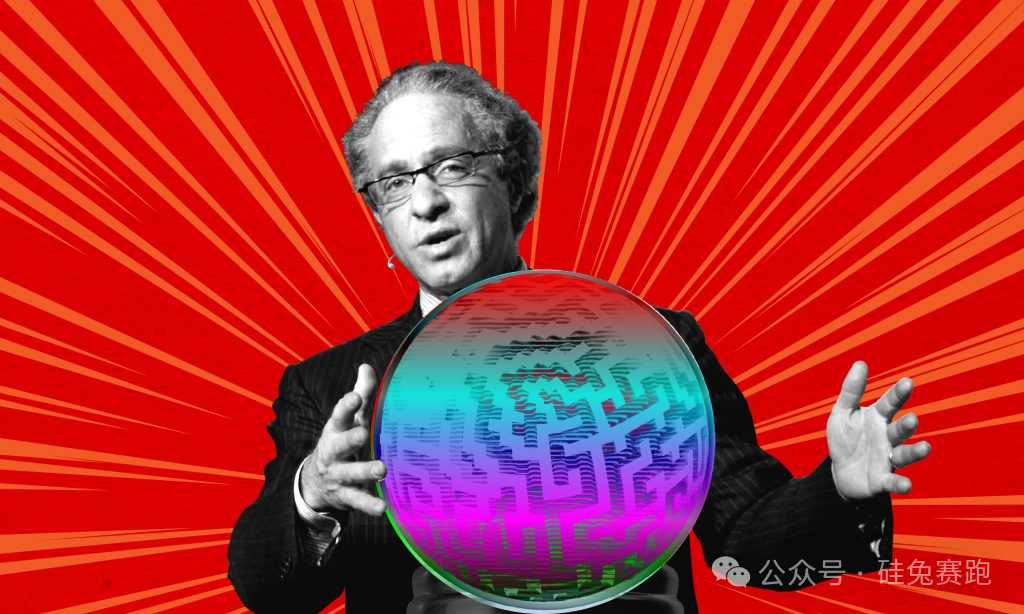
Author | Amelie, Editor | Manman Zhou
“
The person Bill Gates considers "the best at predicting the future of AI."
”
In 2006, 18 years ago, Ray Kurzweil presented his prediction at the Boston AI Conference: humanity will achieve AGI by 2029.
AGI (Artificial General Intelligence) refers to an AI system capable of understanding and solving problems as broadly as humans. Unlike the currently existing ANI (Artificial Narrow Intelligence), AGI possesses the ability to switch freely between different domains and tasks, and can handle various tasks and environments flexibly and universally, similar to humans.
Kurzweil's prediction met with snickers from the audience at the time. Boston, with the highest average educational attainment in the United States, boasted a mostly well-educated audience. Most people, even if they didn't fully believe it, refrained from openly laughing, while some remained skeptical or indifferent.
Of course, similar snickers and doubts have accompanied Kurzweil throughout his academic career, but he has never doubted himself. With his seemingly optimistic predictions transcending time and space, he awaits time's verdict. Recognized by Forbes magazine as the "Ultimate Thinking Machine," this AI futurist is gradually gaining wider recognition amidst rapid technological advancements.
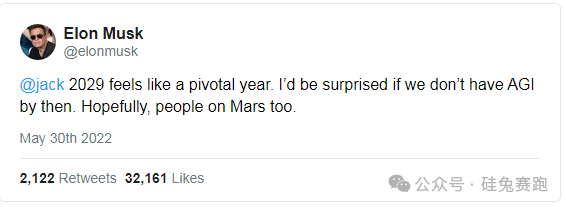
Image source: X
Fast forward to 2024, almost everyone agrees with this prophecy – AGI will be achieved by 2029, or perhaps even earlier.
01
147 Prophecies, 144 Hits
Bill Gates once commented, "He is the most impressive person in AI that I know."
Inventor, author, futurist – these are just a few of Kurzweil's titles. Moreover, he has been dubbed the "Ultimate Thinking Machine" by Forbes magazine and has been recognized as one of the top entrepreneurs and a "legitimate heir to Thomas Edison" by Inc. magazine. A recipient of the National Medal of Technology, he is inducted into the National Inventors Hall of Fame and holds 21 honorary doctorates.
Born in 1948 in New York, Kurzweil boasts an IQ of 165 (the same as Einstein). At 76 years old, he continues to serve as Google's Director of Engineering. His career spans multiple fields, including AI, music technology, and optical character recognition.
As one of the world's top inventors, Kurzweil embarked on his technological innovation journey in the 1970s, founding several successful companies and inventing influential technologies. He invented the first flatbed image scanner, the first text-to-speech reader for real estate listings, and the first musical synthesizer capable of reproducing the sounds of grand pianos and other orchestral instruments (Kurzweil's electronic keyboard instruments), the latter earning him the 2015 Grammy Award for Technical Achievement in recognition of his outstanding contributions to music technology.
As a renowned author, 20 years ago, he penned the bestseller "The Singularity is Near," exploring the relationship between humans and technology and introducing the concept of the "singularity," where technological progress will soon reach a critical point, surpassing human intelligence and fundamentally transforming society. His views sparked widespread discussions and raised concerns about the ethical and societal implications of future technology.
As a futurist, Kurzweil's predictions are astonishingly accurate. In the early 1980s, he foretold that "by 1998, computers will defeat human chess champions." In 1997, AI "Deep Blue" successfully defeated world champion Garry Kasparov. In the 1990s, he predicted numerous advancements in computing and their impact on humanity in his books "The Age of Intelligent Machines" and "The Age of Spiritual Machines." Wireless internet and wearable technology, which are now ubiquitous, were among his prophecies from the 1990s.
Statistics show that Kurzweil has made a total of 147 predictions, all of which were deemed "pipe dreams" at the time. However, 144 of these predictions (115 fully accurate, 12 mostly accurate, and 17 partially accurate) have since been confirmed, with only 3 proving incorrect, yielding an astonishing 97% accuracy rate.

Image source: Google
02
New AI Prophecy for the Next Two Decades
When ChatGPT emerged, Kurzweil was likely the calmest observer. ChatGPT perfectly adhered to the AI development timeline he outlined in the last century.
Two decades ago, in his seminal work "The Singularity is Near: When Humans Transcend Biology," Kurzweil boldly predicted that AI would pass the Turing Test by 2029 and that the singularity would arrive by 2045, marking the point where AI surpasses human intelligence, forever altering human history.
The book introduced the concept of the "singularity," where technological progress will soon reach a critical juncture, surpassing human intelligence and fundamentally transforming society. His views sparked widespread discussions and raised concerns about the ethical and societal implications of future technology.
Kurzweil's prophecy of the technological singularity in 2045 represents the pivotal moment when AI will surpass human intelligence, leading to an "intelligence explosion" and unforeseen civilizational changes. This event could potentially lead to the integration of human and machine intelligence, enabling individuals to connect their brains to the cloud and significantly enhance their cognitive abilities. Kurzweil believes that this integration marks a transformative step in human evolution, unleashing unprecedented creativity and problem-solving potential globally.
Moreover, since 1999, Kurzweil's prediction of AGI by 2029 has been the cornerstone of his futuristic vision. He defines AGI as AI capable of matching human intelligence across various tasks.
Despite recent advancements in AI technology, Kurzweil remains steadfast in his 2029 timeline. He acknowledges that this may seem conservative to some experts today and highlights the key challenges that current AI models must overcome to achieve AGI, including:
Contextual memory limitations
Lack of robust common sense understanding
Inadequate social interaction capabilities
Kurzweil believes that these obstacles will be overcome by 2029, enabling AI to match and potentially surpass human intelligence across various domains.
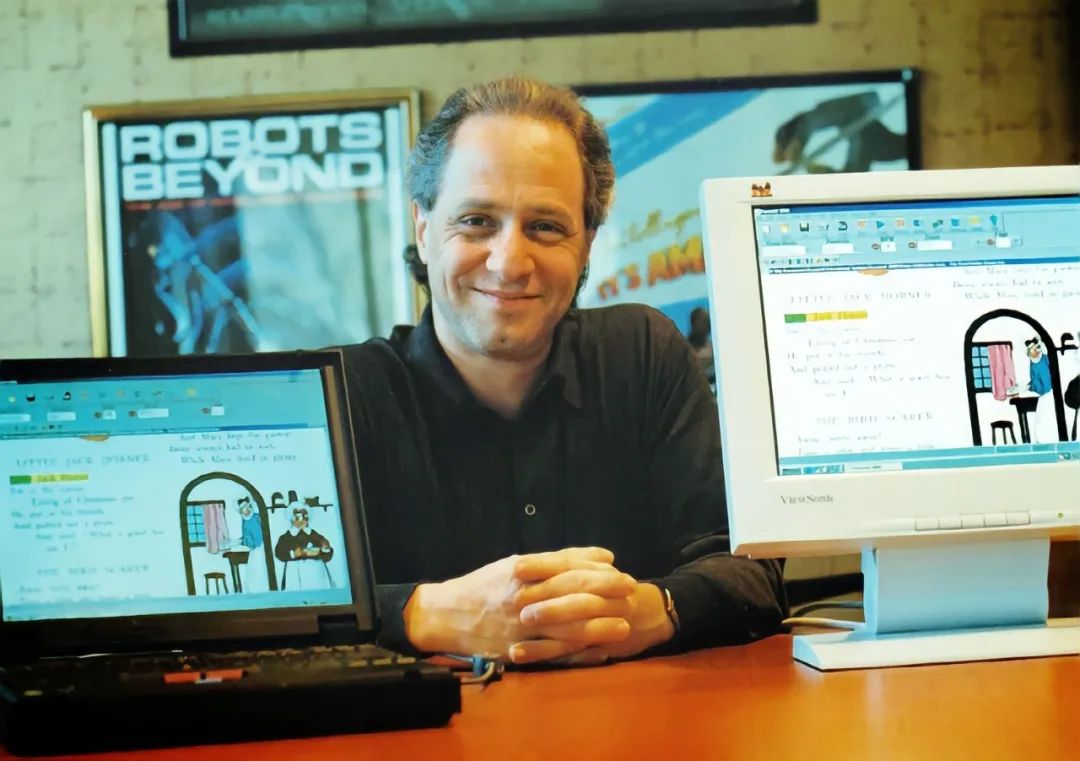
Just a few years ago, the consensus was that this prediction had little chance of becoming a reality.
However, in 2024, AI is evolving at a breathtaking pace, with its rapid development rendering debates about whether AI can pass the Turing Test obsolete. Increasingly, people believe that AGI is within reach, and anticipation for the arrival of the technological singularity is growing.
In June this year, Kurzweil released his sequel, "The Singularity Is Nearer: When We Merge With AI." This book serves as a "midterm summary," unveiling bold new prophecies and setting the stage for a new wave of thought in the AI community.
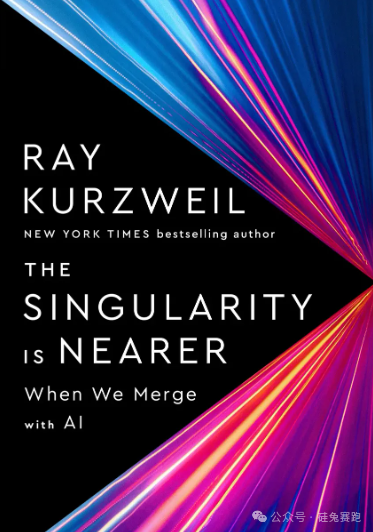
Image source: Amazon
03
This Time, Prophesying Immortality
Whether you fully believe it now or not, the possibility of human "immortality" may indeed become a reality in the near future.
In his new book, Kurzweil doubles down on his promise of human "immortality": in the 2040s to 2050s, we will rebuild our bodies and brains, far surpassing the capabilities of our biological forms.
"We will be able to run faster and longer, swim and breathe underwater like fish, and even equip ourselves with wings if we so desire."
"Our thought processes will accelerate millions of times, but most importantly, we will no longer be dependent on any part of our bodies to survive."
Historically, only one person has lived beyond 120 years – Jeanne Calment, a French woman who reached 122.
Actuarial data reveals that between the ages of 90 and 110, the annual risk of death increases by approximately 2 percentage points each year. For instance, a 97-year-old American has a roughly 30% chance of dying before turning 98, and if they survive to 98, their risk of death before 99 increases to 32%. However, starting at 110, the risk of death escalates, increasing by approximately 3.5 percentage points annually.
Doctors explain that around the age of 110, the body begins to deteriorate, a fundamentally different process from the aging experienced by younger seniors. The aging of supercentenarians (over 110 years old) is not merely a continuation or exacerbation of the statistical risks associated with later life. While they still face the risk of common illnesses each year, they also confront new challenges such as kidney and respiratory failure.
While these arguments are compelling, perhaps we can defer contemplating this issue until we reach 110.
The book anticipates that by the 2030s, we will enter the third stage of life extension, utilizing nanotechnology to overcome the limitations of biological organs. This phase will significantly extend human lifespan, far surpassing the current limit of 120 years.
The book introduces a new concept – "Longevity Escape Velocity." For every year you live, anti-aging research will increase your remaining lifespan by at least one year. Kurzweil predicts that humanity will achieve Longevity Escape Velocity by 2029.
Through AI-driven advancements in biotechnology, humans can effectively reverse aging. Kurzweil envisions using nanorobots injected into the bloodstream to repair and enhance biological functions at the cellular level, potentially leading to indefinite lifespan extension. This radical prediction aligns with Kurzweil's broader vision of human-AI integration and the transformative potential of emerging technologies on human biology.
Aubrey de Grey, a leading biogerontologist and founder of the Longevity Escape Velocity (LEV) Foundation, is one of the key researchers in this field.
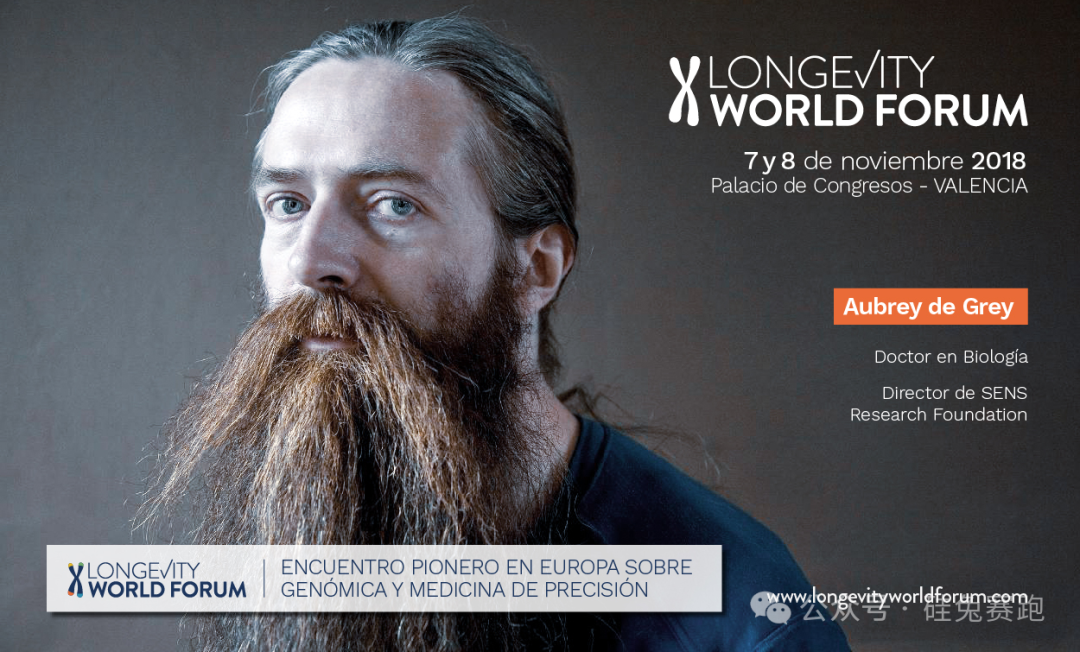
Image source: Longevity World Forum
If nanotechnology by 2050 can address enough aging issues to enable 100-year-olds to live to 150, we can potentially address any new challenges that may arise for this age group by 2100. Longevity researchers like Grey believe that the only solution is to cure aging itself. In short, we need the ability to repair the damage caused by aging at the cellular and tissue levels.
Multiple avenues are currently being explored to achieve this goal, but Kurzweil believes that nanorobots hold the most promise as the ultimate solution.
The book also outlines a plan for implementing this solution:
These nanorobots will be constructed from diamond components, equipped with onboard sensors, manipulators, computers, communicators, and possibly power sources;
While people may intuitively envision nanorobots as "miniature metal robot submarines" slowly navigating the bloodstream, nanoscale physics necessitates a fundamentally different approach;
To maintain our bodies and address health issues, we will require vast numbers of nanorobots, each the size of a single cell;
The optimal ratio of human cells to nanorobots remains to be seen, but advanced nanorobots may prove effective even if human cells outnumber them by several orders of magnitude;
By maintaining and optimizing our bodies with nanorobots, we can prevent major illnesses;
Nanorobots can also address urgent threats to human health by eliminating bacteria and viruses, preventing autoimmune reactions, or unblocking clogged arteries;
Nanorobots are not limited to maintaining normal bodily functions; they can also enhance our energy and focus by adjusting hormones or accelerate natural healing and repair processes.
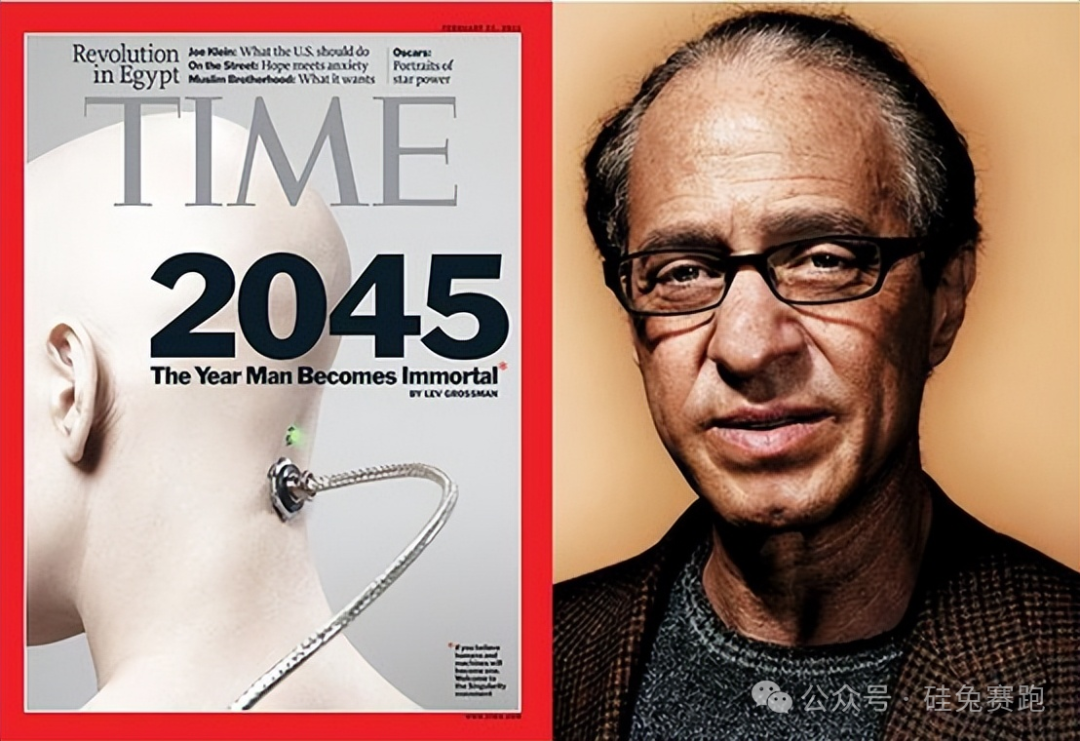
When discussing his own "immortality plan," Kurzweil says:
"My first plan is to survive long enough to reach Longevity Escape Velocity. I take around 80 pills daily to maintain my health, with cryonics as a backup option. I also plan to create a self-replicator (an AI avatar for the afterlife), which I believe everyone will choose to do by the late 2020s."
In order to maintain health and live up to this prophecy, he takes various capsules every day and injects various dietary supplements and vitamins every week. When he was 69 years old, he underwent genetic and blood tests, and the results showed that his actual biological age was only 40 years old, 29 years younger than his actual age. He believes that the key is that the cells in the body slow down the aging process.
Nowadays, his goal is, "I must live until 2045." It seems not difficult, as he will only be 97 years old in 2045.
End of article interaction: What do you think of Kurzweil's new prophecy? Tell us your opinion in the comments section~
Reference links: Google’s AI prophet fast tracks singularity prediction. (Independent)Now in 2024, Futurist Ray Kurzweil Does Not Play When It Comes to the Singularity. (NAB AMPLIFY)AI scientist Ray Kurzweil: ‘We are going to expand intelligence a millionfold by 2045 (The Guardian)What Merging with AI Could Mean for Humanity, According to Futurist Ray Kurzweil. (Next Big Idea Club)








